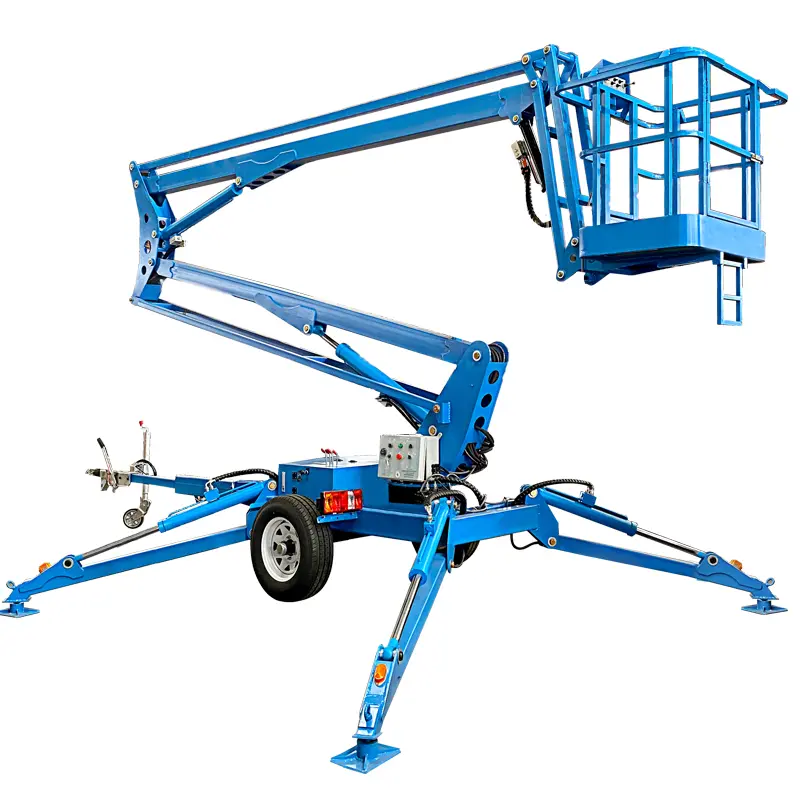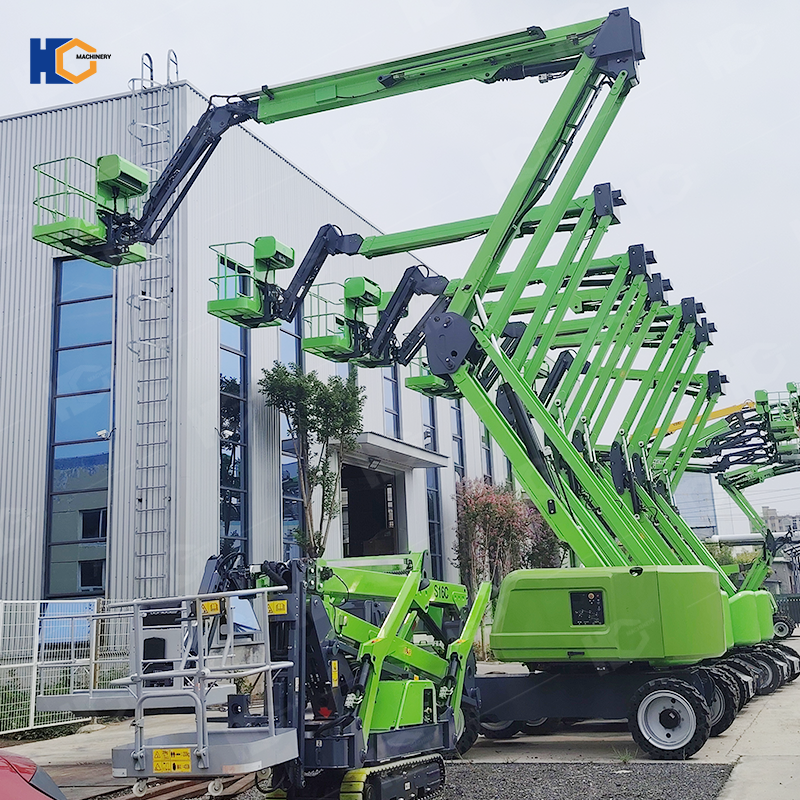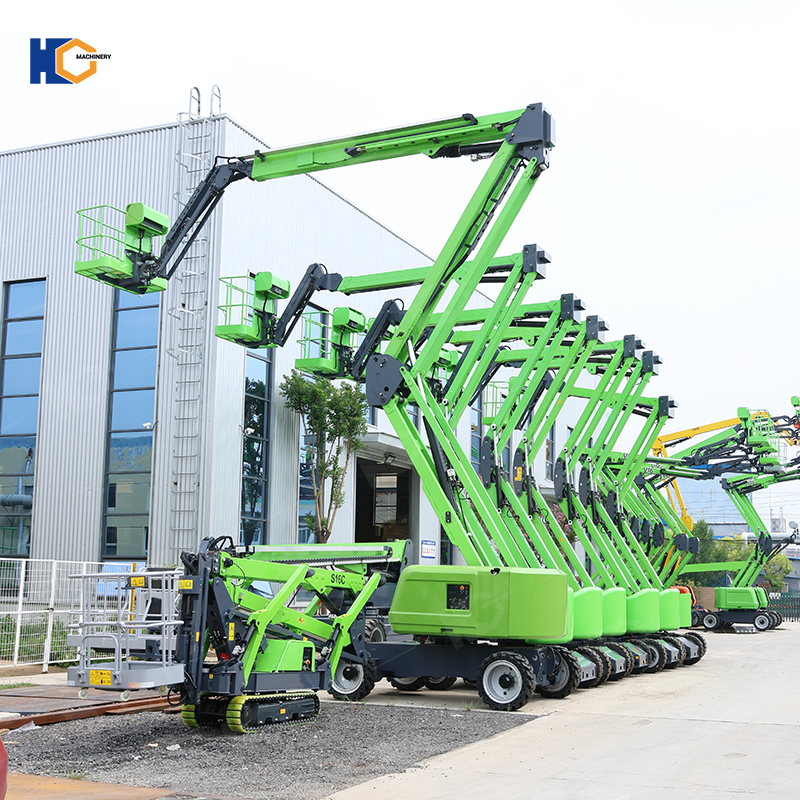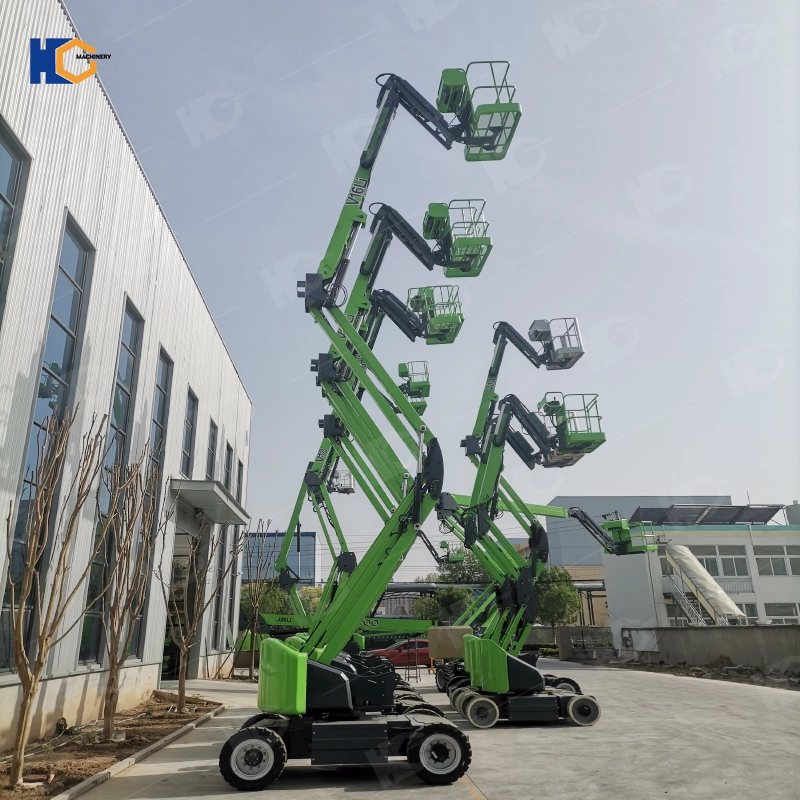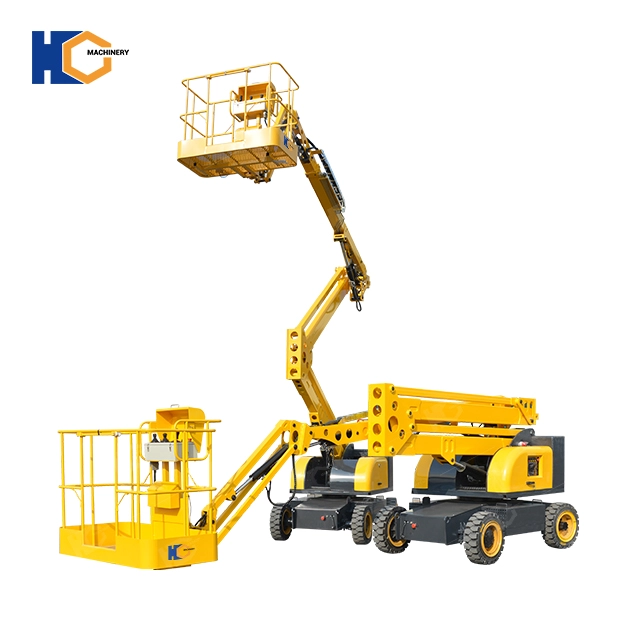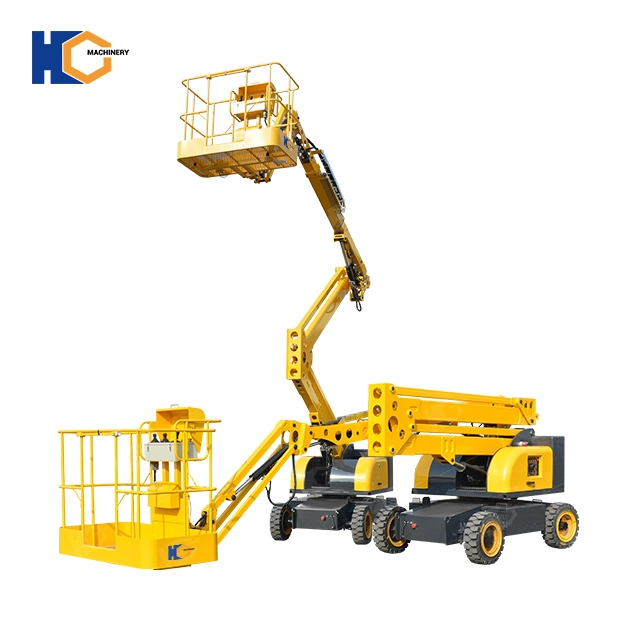Spider Lift for Sale: Comprehensive Guide, Buying Tips & Market Trends (2025 Edition)
Spider lifts, with their iconic spider-like leg structure and flexible operation, have become indispensable tools in aerial work platforms. Whether for construction sites, stage setups, or facility maintenance, spider lifts deliver unmatched versatility. This article dives into the definition, applications, key features, pricing trends, and tips for selecting cost-effective models, helping you make informed decisions.
I. What is a Spider Lift?
Core Features
Spider-Leg Supports: Multi-directional legs auto-level on uneven surfaces (e.g., slopes, grass).
All-Terrain Mobility: Equipped with tracks or rubber tires for sand, gravel, or paved surfaces.
High Stability: Legs distribute weight evenly, ensuring safety even on unstable ground.
Multi-Functional Platform: Rotates, extends, and lifts, with some models featuring weight sensors and anti-tip systems.
Common Types
Mini Spider Lifts: 10–15 meters height; ideal for indoor renovations and landscaping.
Standard Spider Lifts: 15–30 meters; suitable for building maintenance and electrical inspections.
Heavy-Duty Spider Lifts: 30+ meters; used in wind turbine installation and bridge repairs.
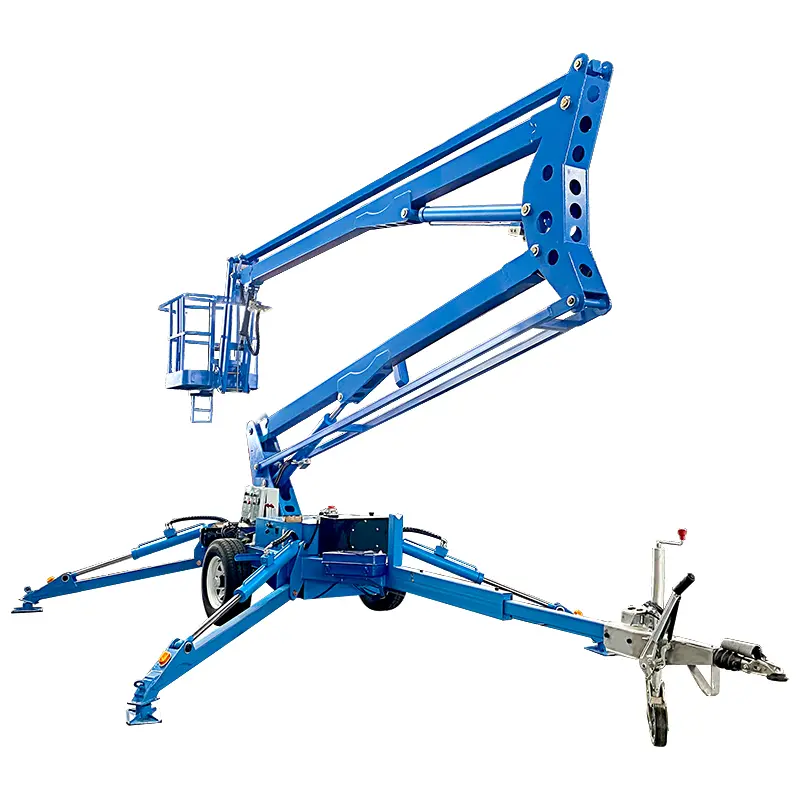
II. Key Applications of Spider Lifts
1. Construction & Engineering
Wall Construction: Eliminates scaffolding; accesses hard-to-reach areas.
Steel Structure Installation: Navigates complex job sites effortlessly.
Roof Repairs: Legs straddle edges without damaging structures.
2. Commercial & Public Maintenance
Storefront Signage: Maneuvers narrow aisles in malls.
Stadium Lighting Checks: Rapid deployment at heights.
Airport Canopy Servicing: Stability ensures safe operations.
3. Specialized Scenarios
Film Production: Stage lighting rigging and drone assistance.
Disaster Relief: Aerial search and rescue post-earthquakes or floods.
III. Key Considerations When Buying a Spider Lift
1. Essential Parameters
| Parameter | Importance | Buying Tips |
|---|---|---|
| Max Height | ★★★★★ | Add 10–20% buffer to required height. |
| Platform Size | ★★★★☆ | Width ≥1.2m; Weight capacity ≥300kg (team use). |
| Leg Span | ★★★★☆ | Ensure legs cover edge of work areas. |
| Power Type | ★★★☆☆ | Electric for indoor; Fuel-powered for outdoors. |
| Gradeability | ★★★☆☆ | ≥30° slope tolerance for rough terrain. |
2. Brands & Pricing
International Brands (USD 70,000–300,000):
Genie (JLG): Premium reliability.
Skyjack: Budget-friendly entry-level options.
Chinese Brands (USD 30,000–150,000):
XCMG: Robust after-sales network.
Zoomlion: Smart IoT integration.
3. Must-Have Safety Features
Anti-Tip Sensors: Automatically halt lifting if platform tilts beyond limits.
Overload Protection: Restricts lifting when capacity is exceeded.
Emergency Stop: Instant power cutoff during crises.
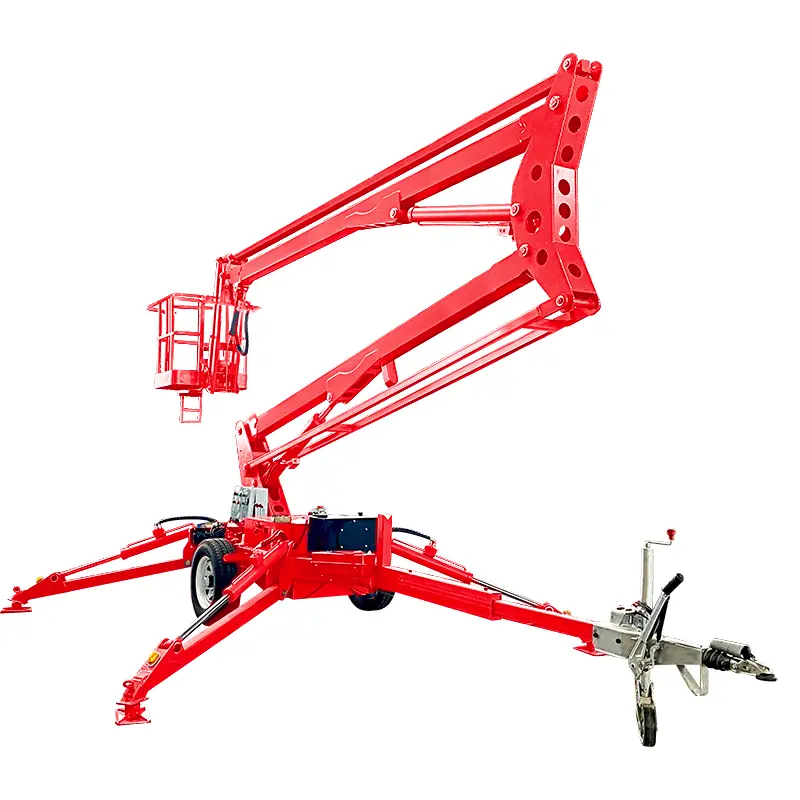
IV. Spider Lift Price Trends (2025 Update)
1. Price Drivers
Configuration: Electric/fuel, smart controls, brand markup.
Extras: Collision avoidance, auto-leveling legs, GPS.
Service: Warranty-inclusive vs. bare-machine pricing.
2. 2025 Market Rates (China-Based)
| Model | Bare Machine (USD) | With Installation & Training (USD) |
|---|---|---|
| Mini Spider Lifts | 27,800–55,600 | 34,700–62,500 |
| Standard Spider Lifts | 55,600–111,100 | 69,400–138,900 |
| Heavy-Duty Spider Lifts | 111,100–208,300 | 138,900–277,800 |
Note:
Prices are converted using an approximate exchange rate of 1 USD = 7.2 CNY (subject to real-time fluctuations).
Installation and training fees may vary based on regional labor costs.
Note: Imported models cost 30–50% more but offer longer warranties (3–5 years vs. 1–3 years).
V. Why Choose Chinese Spider Lifts?
1. Cost Advantages
Economies of Scale: 30–50% cheaper than European counterparts.
Local Service: XCMG, Zoomlion, and Sanyo have 200+ service centers in China.
2. Technological Upgrades
Smart Features: 4G remote monitoring, AI-driven diagnostics.
Eco Certifications: Compliant with EU CE and China GB standards.
3. Custom Solutions
Specialized Models: Explosion-proof, cold-resistant variants.
Financing: Leasing or installment plans for budget buyers.
VI. Maintenance & Longevity Tips
1. Routine Checks
Hydraulic Oil: Replace every 500 hours to prevent leaks.
Tires/Tracks: Inspect monthly; replace worn components.
Leg Joints: Lubricate regularly to avoid rust.
2. Lifespan Extenders
Avoid Overloading: Prolonged overloading damages hydraulics.
Annual Calibration: Professional sensor and system checks.
VII. Conclusion: How to Choose the Best Spider Lift?
Define Needs: Match height, terrain, and usage frequency.
Compare Specs: Prioritize stability (leg span) and safety (anti-tip systems).
Calculate Total Cost: Chinese brands offer better value; imports suit extreme conditions.
Service Assurance: Opt for brands with 3-year warranties and nationwide support.
From construction firms to event planners, spider lifts are transforming aerial work efficiency. With advancements in electrification and smart tech, 2025 marks the dawn of spider lifts as essential "new infrastructure" tools.
Act Now: Contact local dealers for free site assessments or visit brand websites to explore the latest models!
How to maintain the spider lift for sale in daily use?
Daily inspection: Before each use, a comprehensive inspection should be performed, including checking the hydraulic oil level, tire pressure, battery power, control panel and safety devices.
Lubrication: Regularly check and lubricate the key components of the Boom lift, such as hydraulic cylinders, joints and pulleys, etc. to ensure their normal operation.
Cleaning: Keep the Boom lift clean and clean the external surface and internal parts regularly to prevent dust and debris from accumulating and affecting operation.
Bolt inspection: Check all connecting bolts and nuts regularly to make sure they are tight and avoid loosening or falling off.
Electrical system inspection: Regularly check the connecting lines and electrical components of the electrical system to ensure that they are working properly to avoid circuit faults and fire risks.
Regular maintenance: Carry out regular maintenance according to the manufacturer's recommendations, including replacing hydraulic oil, checking batteries, replacing filters, etc.
Train operators: Ensure that operators have received professional training and understand the correct operation methods and safety precautions of Boom lift.
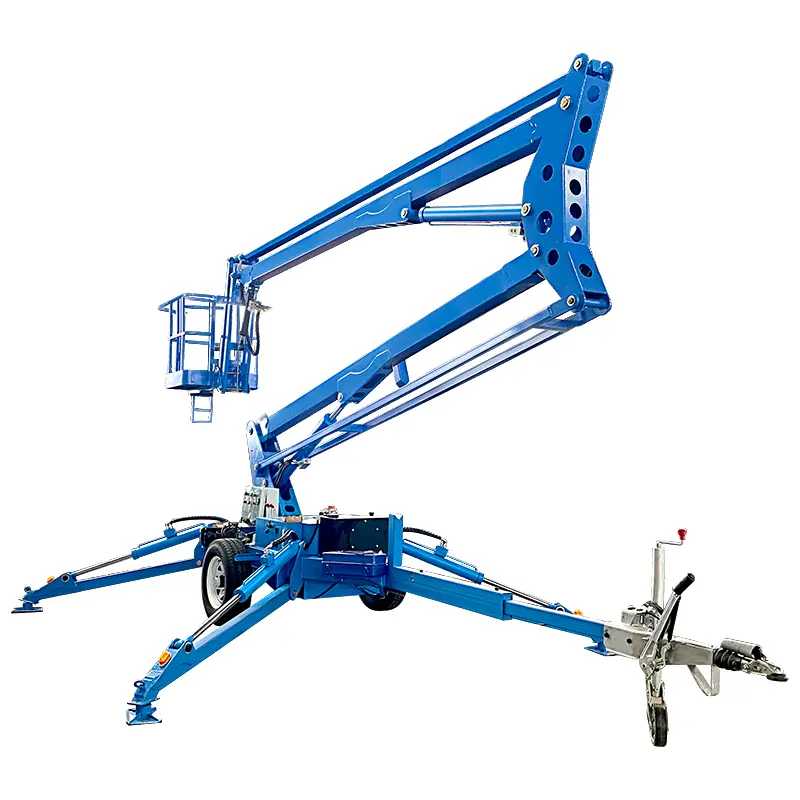
How can i get the quote?
Please leave us a message or send an email to admin@jnhclift.com, and we will contact you to send a quotation as soon as we receive your message.
